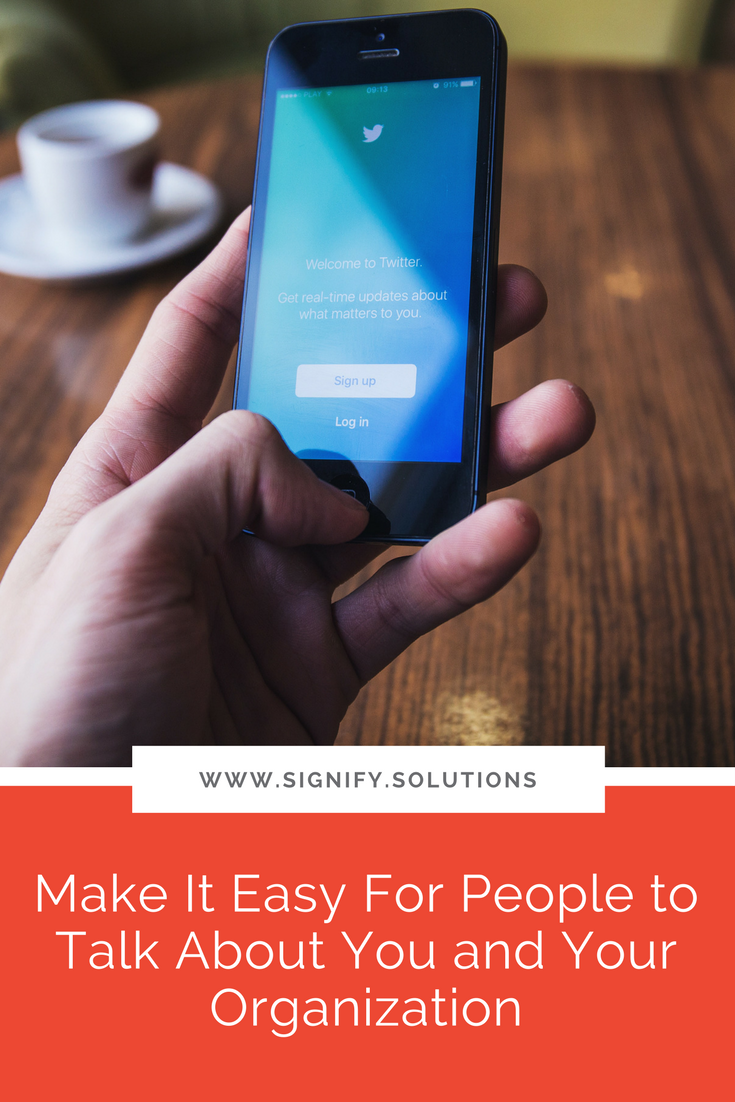I've recently become a little obsessed with the phrase "work ON your business, not IN your business," made popular by Michael Gerber. Since my own business turned one this summer, I've been in a constant state of reflection, evaluation, and motivation. And those words, and his book, The E-Myth Revisited, kept popping up in conversations and online. Not a coincidence! So, I finally decided give it a read (via Audible). I can say that it was well worth my time, and I think that it would be worth yours too.
Since nonprofits and social enterprises are mission-driven, and not profit-driven, it can be difficult to understand or incorporate a traditional "business mindset." Heck, that phrase may even sound a bit icky to you. After all, you and I aren't in this for business as usual. But, hang with me, because I believe there are some valuable lessons to pull from this book that you can use in your organization. Think about it, how much good can we do if we can't grow and scale? Serving a larger purpose takes a strong strategy. One person can absolutely make a difference, but the point is to bring others along, right? And if your organization continually struggles or gets stuck, you won't be available to help anyone. Ouch! I know that's not what you want, and it's not what I want for you.
(Psst: This is part one of two posts. See post two here.)
While there are many ideas in this book that are intriguing (some of which I admit that I was hesitant about at first), I'm only going to focus on two, over-arching themes of the book. I'm also going to share what a few other, stellar nonprofit and social enterprise leaders said when I asked them how they work on their business.
The big idea I want to chat about today are the three "personalities" Gerber notes that every business owner must identify and utilize: the entrepreneur, manager, and technician. He states that all business owners already have these personas inside them, but most people tend to lean heavily on one, and rely very little on the other two. However, he believes that it takes all three to be successful. He actually makes a case for that feeling you get of being pulled in multiple directions! To me, that's reassuring.
THREE FOR THE PRICE OF ONE
The entrepreneur is, as you'd expect, the dreamer, innovator, and visionary. On the other hand, the manager craves order, solves problems, and enjoys details. And the technician is the craftsman who actually gets the work done.
Every year, approximately one million small businesses literally or figuratively open their doors. One million! By the following year, 40% of them are closed. And four out of five don't make it to their five-year anniversary. Sad! I know you are out there trying to make the world a better place, and so, we need you to survive. Not only that, we need you to thrive!
Gerber says that the average small business owner is 10% entrepreneur, 20% manager, and 70% technician. Most small businesses fail because a technician isn't necessarily a good business owner. This guy/gal is a worker bee, but can't necessarily think long-term or accomplish large goals. They only focus on the task right in front of them. If that's the case, he/she is likely either burn out or continue to struggle because the work can only be sustained for so long by that one person, and they aren't making enough profit to bring in other people.
Likewise, if we rely too heavily on our inner entrepreneur, we'll have oodles of ideas, but never actually accomplish anything. And then the manager is stuck right in the middle without the other two, constantly pushing paper, answering emails, and posting on social media (hear: staying very busy), but with no direction or substance to back it up.
Which personality feels more dominant for you? Entrepreneur, manager, or technician? Gerber is right on target for me. I definitely have facets of all three, and value all three in myself, but I mostly rely on my technician, because she makes the moola. :)
Oh, and this is a good exercise to think through even if you have a partner or small team. One of these personalities may be more prevalent across the board, and you'll need to find a way to bring some balance.
Next week, we'll talk about Gerber's strategy for success. But I wanted to begin by understanding where we're all starting from. Again, his belief is that it takes all three of these personalities working in harmony for small businesses owner to achieve success.
I have no doubt that, like me, you got a little overwhelmed when you started your organization. You knew how to do one thing well, or maybe even a few things, but as a small business owner, you had to learn a whole bunch of skills to stay afloat . . . IT, marketing, admin, HR, fundraising, salesperson, social media manager, writer, coffee gopher, pep squad captain, etc. That definitely works for a while, but it's not sustainable. It's not going to allow you to grow (no matter how you apply that definition to your business), or help more people through your mission.
So, first identify your dominant personality. Then, consider ways that you can start developing the other two. Think of it as being holistic, well-rounded, or even just what it takes to be the #WorldsBestBoss. This is the beginning, the foundation.
Intrigued? Pick up a copy of the book. I highly recommend it!
WHAT IT LOOKS LIKE IN ACTION
And if you're looking for some ideas of how you can work on your business, rather than simply in your business, here's some feedback from a few pros:
“I prioritize goals weekly and quarterly, and make sure to keep them in a place where I see them every day. This helps me remember what's truly important, and keeps me moving toward bigger goals on a daily basis.” – Joanna Waterfall, Yellow Co.
“One of the best ways I know to guard time to work on it, not in it, is by ensuring I don't schedule most of my time away in meetings. I ensure that no more than 50% of my time is spent in meetings. Ideally, it's 30%. That way, I have 50-70% of my time to dream, write, create, and work on it, not in it.” – Carey Nieuwhof, www.LeadLikeNeverBefore.com
“I use time blocks on certain days throughout my week, which are for specific, higher-level projects that make my work easier in the long run. One of the things I do during these time blocks is work on my content library. These are spreadsheets of content focused on evergreen—undated, but always relevant—blog posts and quotes that I can schedule into my social media calendar. Cataloging this content and repurposing it in this way helps me to keep helpful and interesting content in front of my customer's eyes on social media, without always having to take the time to create new content. Between scheduling out this evergreen content from my library of spreadsheets, I sprinkle in current, dated, timely content and information that keeps things fresh on my channels.” - Jennifer Wilder, Voiceover Artist and Social Media Manager
"I utilize a To Do List organized by order of importance so I'm always engaged with the most important issues of our organization." – Larry Witherspoon, Automotive Training Center
“I work with a coach. Having regular check-ins and accountability helps me keep my eyes on the prize, as it were. I also invest in my development (and the development of my team). Professional development budgets are often overlooked in small businesses and organizations, but it means so much to me and to my staff to be able to focus on learning and growth." – Cindy Wagman, The Good Partnership
“I do find myself in the trap of working IN vs ON my business more frequently than I wish, but my best approach for getting above it and feeling like I am giving real strategic thought and leadership is by connecting and carving out time with others not directly involved with the business, but whom I trust and respect. This may be a lunch date with one person, a working session with a peer group, or a professional speaker event within my network circles. This ‘space’ and time always allow me to hear from others, learn from their challenges and focus, and think about intersecting opportunities for SparkFire Active. Every time, I come out energized, refreshed, and with a clearer roadmap for the plan I want to be working on. The spirit of creativity and collaboration elevates my focus. – Samantha Hodgkins, SparkFire Active
PIN THIS POST FOR LATER:
(Amazon links are affiliate links.)
I'm Kristi Porter, and I started Signify to provide writing, consulting and strategy services to nonprofits and for-profit organizations with a social mission, primarily through copywriting, marketing, and business communications. I believe that cause-focused organizations like yours are the future of business. You're proof that companies can both make money and do good. And I'm here to help you get noticed and grow. When you succeed, we all win.













































